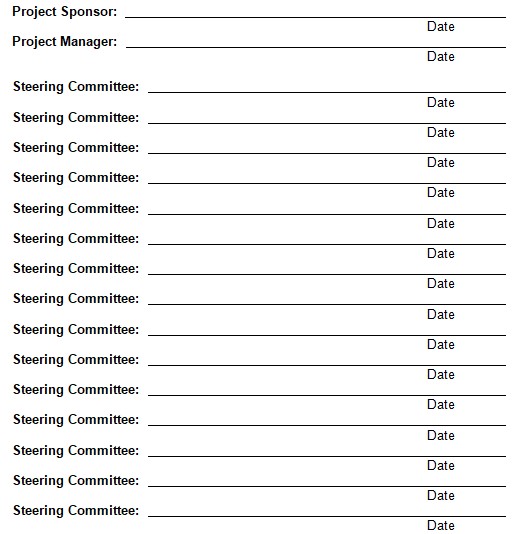Introduction
Purpose of Plan
Nuclear poser usage is obviously the future alternative to the gradually depleting powers sources as a well as the ever increasing need for power. Concerns are however raised globally regarding the viability of this source of power considering the numerous risks associated with it. It is on this basis that the nuclear international development association has deemed it necessary to organize a conference to dispel these fears. The proposed conference is expected to bring together specialist from across the world and hence come up with conclusive facts about the risks and benefits associated with nuclear power. This paper does not however go into the details of the conferences proceedings but rather focuses on the details of preparation for the conference. It outlines the processes, schedule and resources necessary for successful completion of the project.
Background Information/Available Alternatives
The plan provides a detailed analysis of the events prior to commencement of the conference. It gives a step by step account of the events as they happened. Prior to drafting of this report, extensive research has been conducted on similar conferences as well as the market trends of various resources that will be necessary for successful completion of the project. Up to the time of developing this report, all the necessary resources have been identified, an appropriate timeline of the project has been developed and all the relevant tasks have been identified and appropriately scheduled. This report will illustrate all these factors within its body. Additional, a provisional budget and timeline for the project is included in the report. These are based on findings of the market trends both current and perceived within the period of implementation.
Project Approach
Implementation of this project will involve a number of phases and key task which will form basis for its success. The tasks are listed below:
- Setting up project structures
- Detailed project planning
- Detailed project budget
- Set up communication structures
- Develop conference procedures
- Develop format and framework of the conference
- Project documentation and management of project administration
- Monitoring of progress
- Convene project management meetings
- Project Administration
- Planning for program support
These tasks will form basis for project implementation. However, it is important to note that these are major tasks and a number of sub-tasks are present within the task which would likewise require planning if the project is to succeed. This explains the need for long planning duration prior to hosting the conference.
Goals and Objectives
Business Goals and Objectives
The mission of the Nuclear International Development Agency (NIDA) is provision of leadership in expertise and international cooperation in usage of nuclear power as an alternative source of energy, thereby contributing to the safety and well-being of people throughout the world alongside energy provision. Its mission is intended in achieving the following outcomes:
- Enhanced protection of life, property and livelihood of humans;
- Increased safety within reality of nuclear power as a feasible energy source;;
- Sustained economic growth in both developed and developing countries; and
- Protection of other natural resources and improved environmental quality.
- Continuously availability for energy regardless of changing needs and sources depletion.
Five strategic objectives are adopted in addressing the mentioned strategies. These include:
- Science and technology development/implementation to monitor and observe the environment the emerging threats and trends in nuclear power projects.
- Information delivery to ensure the society is informed of the changing trends in nuclear technology.
- Capacity-building to sustain and improve the ability of organizations and researchers to come up with nuclear technologies.
- Form work partnerships international agencies academic institutions, media and the private sector to come with appropriate and relevant nuclear technology;
Other than address nuclear concern issues, NIDA expects to generate cash in form of participation fees as well as well as sponsorships from interested organizations. Additionally, the conference will raise its global profile as a promoting body for nuclear power development.
Project Goals and Objectives
The conference intends to primarily address civilian safety issues with regard to the future of nuclear power production. To achieve this intends to attain the following:
- Address the japans nuclear disaster case in context of civilian casualty.
- Come up with a factual document of risk and their mitigation strategies with regard to nuclear power.
- Address global issues regarding nuclear power with the exclusion of proliferation matters as well as use of nuclear for military purposes.
Generally, its focus will be on civilian nuclear installations. NIDA also expects to build a long term faith on prospect of nuclear power to the globe for peaceful use.
Scope
Scope Definition
The scope of the conference spans civilian nuclear safety and its future. The context for the discussion is the Japanese disaster. It seeks to address the issue of nuclear safety from a global standpoint. The conference will not tackle nuclear proliferation or military uses of nuclear power. It will only look at nuclear safety concerns in civilian installations.
It takes into consideration the technical aspects of facilitating the conference from initiation through to its completion. The key technical considerations for the plan include logistical requirements, mobilization, information, and fundraising. Logistical requirements cover travel and accommodation. Information handling includes all communication to potential participants, and the dissemination of conference materials thereafter. These include experts from all branches of nuclear technology and interested parties. Fundraising for the conference concludes the list of technical requirements.
The key events that will define the direction of the project plan and hence the needs for the aforementioned technical utilities include the followingScope
- Preconference period: this covers the period before commencement of the conference and includes call for papers and registration of participants. Additionally, it involves follow up on expected participants, and preparation of conference support utilities as well as the actual conference plan. Invitation will be directed to both groups and individuals after which, the registration exercise will commence. This period is the most critical to this plan as it defines the proceedings of the other two periods.
- Conference period: This period is basically remised on the products of the previous periods and involves the actual conference proceedings.
- Post-conference period: this period is critical to determination whether or not the conference has attained its objective. The information from the conference is disseminated to decisions making and opinion shaping institutions as well as the general public.
Project governance
A secretariat will be formed to facilitate project delivery. The secretariat will be based in the hosting city and will comprise of the following:
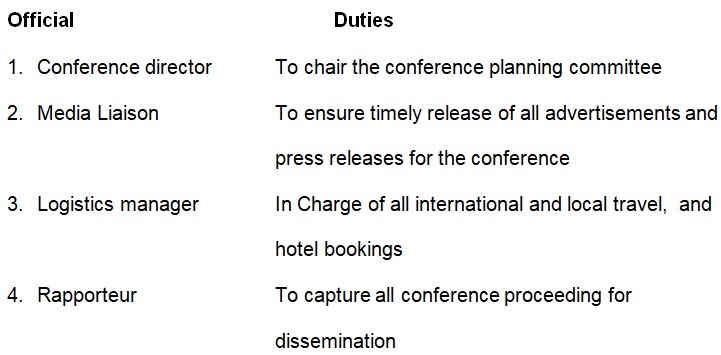
NIDA will also include external stakeholders including the International Atomic Energy Agency (IAEA), Nuclear Energy Agency (NEA), and European Organization for Nuclear Research (CERN) and national governments. This liaison will be facilitated by the secretariat. Additionally internal stakeholders will be involved including corporate and individual members of NIDA. This group of stakeholders will be communicated to through internal channels including email updates and event listing on NIDA’s website. All other matters relating to them fall under normal organizational arrangements. All stakeholders will be critical to implementation of this plan and as such all will be kept in constant communication with NIDA before and after the conference.
Items beyond Scope
However some matters are beyond the confines of this report and this include:
- Evaluation of contents of conference proceedings
- Preparation of plan for actual conference proceedings
Projected Budget
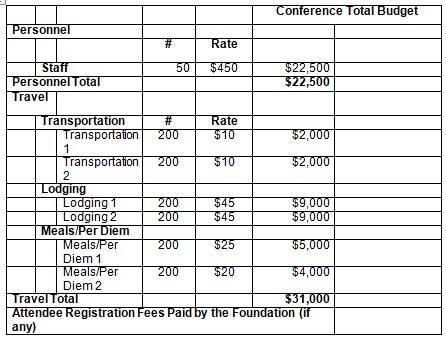
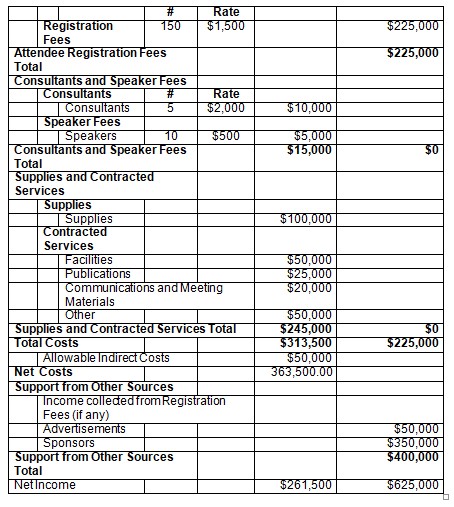
Risk Assessment
Initial Project Risk Assessment
Milestones
The following represent key project milestones, with estimated completion dates:
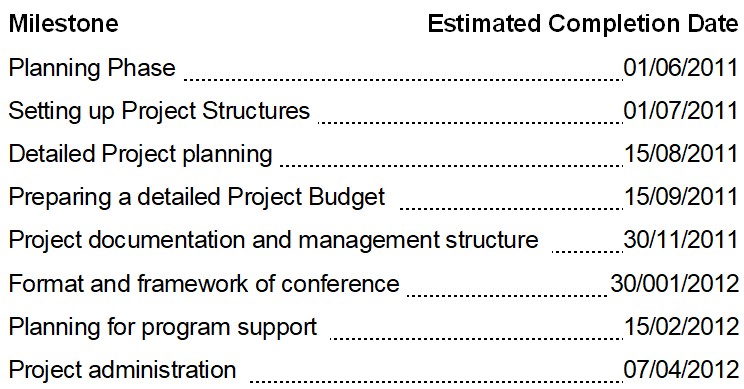
Assumptions
Project Assumptions
In preparing this project implementation plan, a number of assumptions are made as illustrated below:
Although some participants are expected to make late registration and attendance arrangements, most participants will confirm attendance on time to ensure timely planning.
The steering committee will receive adequate finances to ensure all logistics are put in place in place within the appropriate time.
The Steering Committee will enable timely plan execution including timely approval of phases and constantly meting as appropriate.
Project delays are likely to result from lateness of draft deliverables.
The communication plan will be adhered to all the parties involved in the plan and any variations will be communicated within reasonable time.
The City will ensure availability of all infrastructures necessary to facilitate successful implementation of the project.
The entire participant body will abide stick to the guidelines identified within this plan.
Changes may be made to the plan depending on emerging information.
Constraints
Project Constraints
Various factors may constrain implementation of the plan. These include;
- Limited sources as well as uncertain sources of funding.
- Legal obstacles may create inconsistency in availability of resources.
Related Projects
There are no known related projects running concurrent to this one and hence all attention will be focused on this one by nuclear professionals as well as agencies..
Critical Project Barriers
Unlike risks, critical project barriers may completely destroy a well planned project initiative. Possible critical barriers to this project that could jeopardize its fruition include;
- Withdrawal of donor funding.
- Natural disasters prior to the conference or terrorism acts in host city.
- Inadequate number of confirmed attendance.
Should any this happens, the plan shall be deemed as being invalid and hence implementation will stop immediately.
Project Management Approach
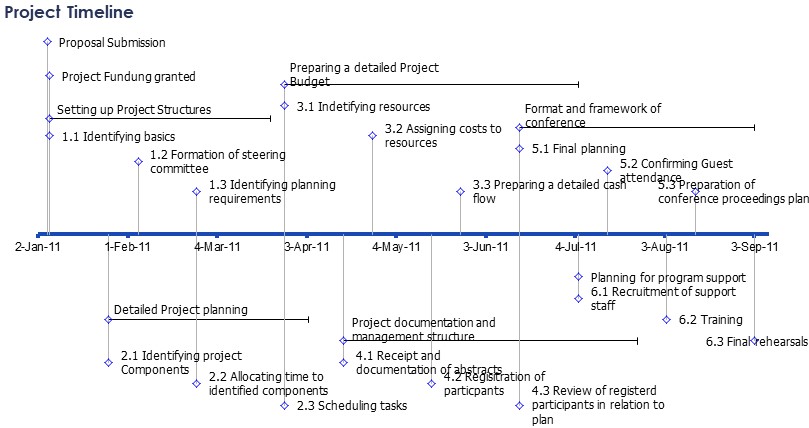
A detailed description is as shown by the table below:
Project Roles and Responsibilities
Issue Management
The information contained in this report is subject to changes as may be deemed appropriate by the stakeholders involved. Any changes are likely though to interfere with a number of critical areas within the project. It is on this basis that all changes are therefore subject to review by a number o persons including the project manager, the steering committee and other stakeholders as may be appropriate. The critical success factors in this project include available resources, provided timeline, and project quality/deliverables. The following steps will be used in resolution of any emerging issues;
- Once a change area has been identified and an accompanying likelihood of impact on critical factors, the project manager will be notified and accordingly he will document the issue.
- The project manager will then review the matter and submit it along with his recommendations to the steering committee for consideration.
- On receiving the issue, the steering committee will evaluate it on basis of provide recommendations and either approve, reject of modify the provided options. Failure to which the matter is forwarded to the NIDA management board.
- The board will then review the matter and provide a final decision with regard to the matter.
The decision will then be channeled via the steering committee to the project manger who will then implement it accordingly.
Communications Plan
Communication is a key component of any project. Communication breakdown can easily compromise the overall objective of the plan. This program takes into consideration this important need and provides a plan for communicating issues. The communication plan targets the following audiences;
- Project sponsor (NIDA)
- Steering committee
- Project manger
- Participants
- Experts invited
- Conference participants
The chosen communication methodology is top down whereby the executive leadership will communicate directions via respective channels to the implementing body. Additionally, the steering committee will keep all stakeholders updated on the status of the project through provision of monthly reports. The reports will inform the stakeholders the following issues;
- Summary of completed tasks within the ended month.
- Summary of scheduled task for the coming month.
- Emerging issues and how they were resolved during the ended month.
The steering committee will also hold monthly meetings to deliberate on the status of the meeting. F need be such meetings will be twice a month. This will be preceded by a status report by the project manger for review by each member.
The implementation team will have fortnight meetings or more as deemed appropriate. All members swill review the progress of the project and prepare a written report to the project manager for review. The project manager will forward the report to the steering committee prior to the steering committee meeting.
Attachments/Appendices
Approvals
Sign-off Sheet
I have read the above Project Plan and will abide by its terms and conditions and pledge my full commitment and support for the Project Plan.
